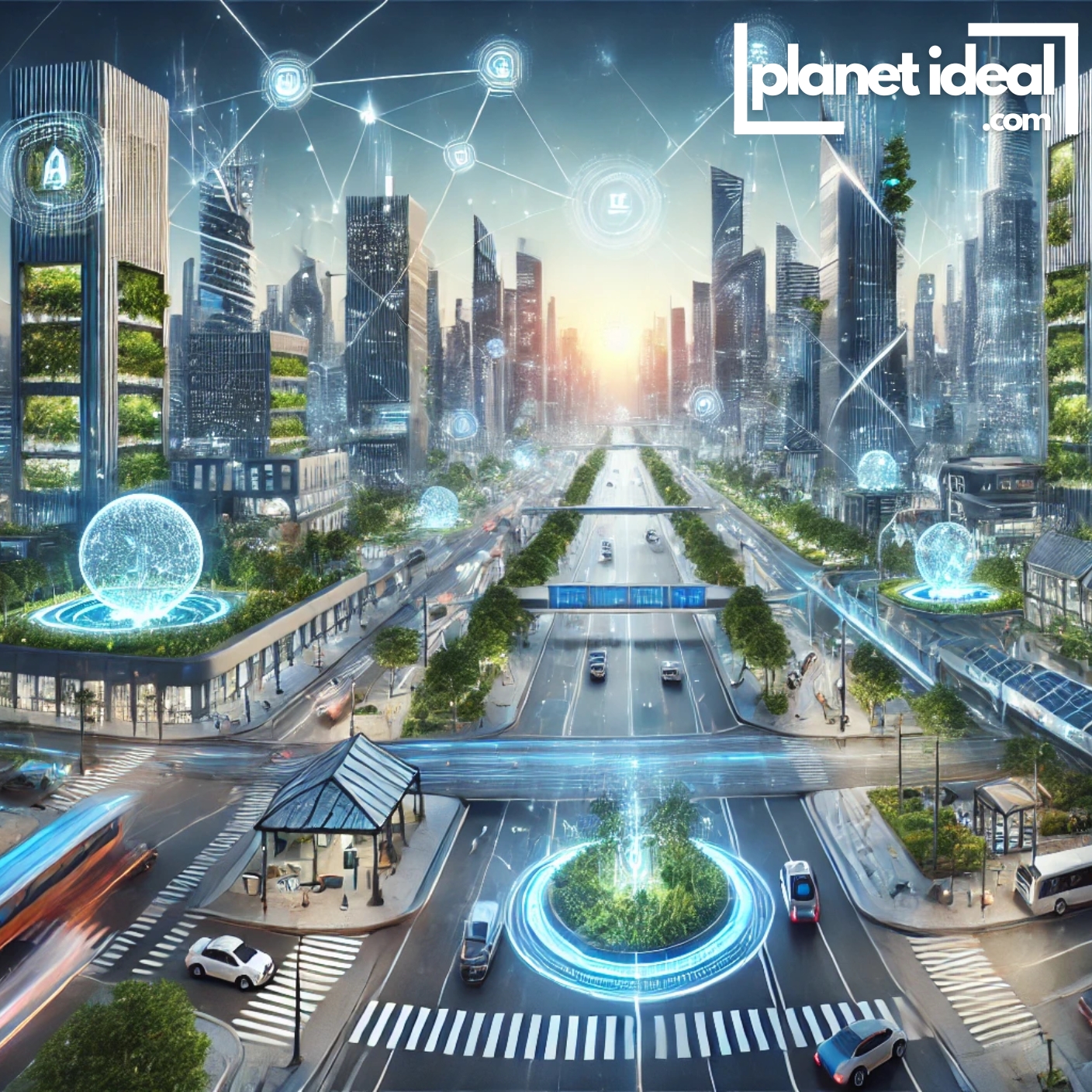The world of technology has always been about pushing boundaries—whether it’s creating faster computers, smarter devices, or groundbreaking solutions to everyday problems. But in recent years, there’s been a seismic shift in focus: sustainability has become a driving force behind the future of tech and innovation.
From renewable energy systems to eco-friendly gadgets and green data centers, companies and inventors are finding creative ways to reduce their environmental footprint while delivering cutting-edge solutions. In this post, we’ll explore how sustainability is reshaping the tech industry, highlighting the innovations that are paving the way for a greener future.
Table of Contents
ToggleWhy Sustainability and Tech Go Hand-in-Hand
Technology has a massive influence on how we live, work, and interact with the world. Unfortunately, it also comes with significant environmental costs—from energy-hungry data centers to e-waste piling up in landfills.
Sustainable tech aims to tackle these challenges by creating products and systems that minimize harm to the environment while maximizing efficiency and usability. The result? Innovations that help us do more with less while protecting the planet for future generations.

1. Renewable Energy and Sustainable Power Systems
One of the biggest ways sustainability is shaping tech is through the push for renewable energy. As traditional energy sources like coal and natural gas become unsustainable, renewable energy technologies are taking center stage.
Innovations in Renewable Energy Tech:
- Solar Panels: Advances in solar technology have made them more efficient, affordable, and accessible.
- Wind Power: Modern wind turbines generate more energy while taking up less space.
- Energy Storage: Companies like Tesla are developing battery systems that store renewable energy for use during peak demand.
Example in Action:
Google has committed to running all of its data centers on 24/7 carbon-free energy by 2030, setting an ambitious standard for the tech industry.
External Link: Learn more about renewable energy innovations at IRENA.
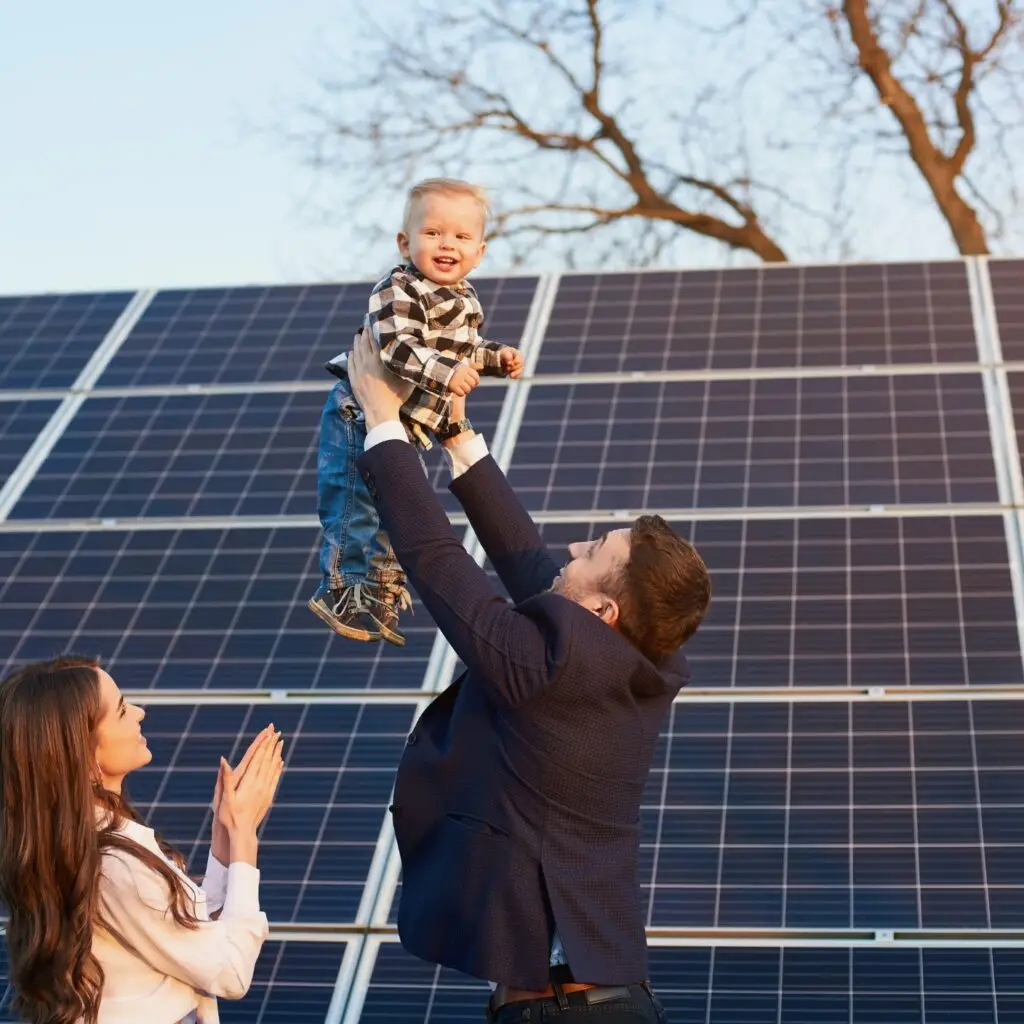
2. Green Data Centers and Cloud Computing
Data centers are the backbone of the digital world, but they’re also major energy consumers. To address this, companies are rethinking how these facilities operate, focusing on energy efficiency and sustainability.
Key Trends in Green Data Centers:
- Energy Efficiency: Using advanced cooling systems and optimized hardware to reduce energy consumption.
- Renewable Energy: Powering data centers with wind, solar, or hydroelectric energy.
- Carbon Offsetting: Companies like Amazon Web Services are offsetting emissions by investing in renewable energy projects.
Why It Matters:
Green data centers ensure that the growing demand for cloud computing doesn’t come at the expense of the planet.
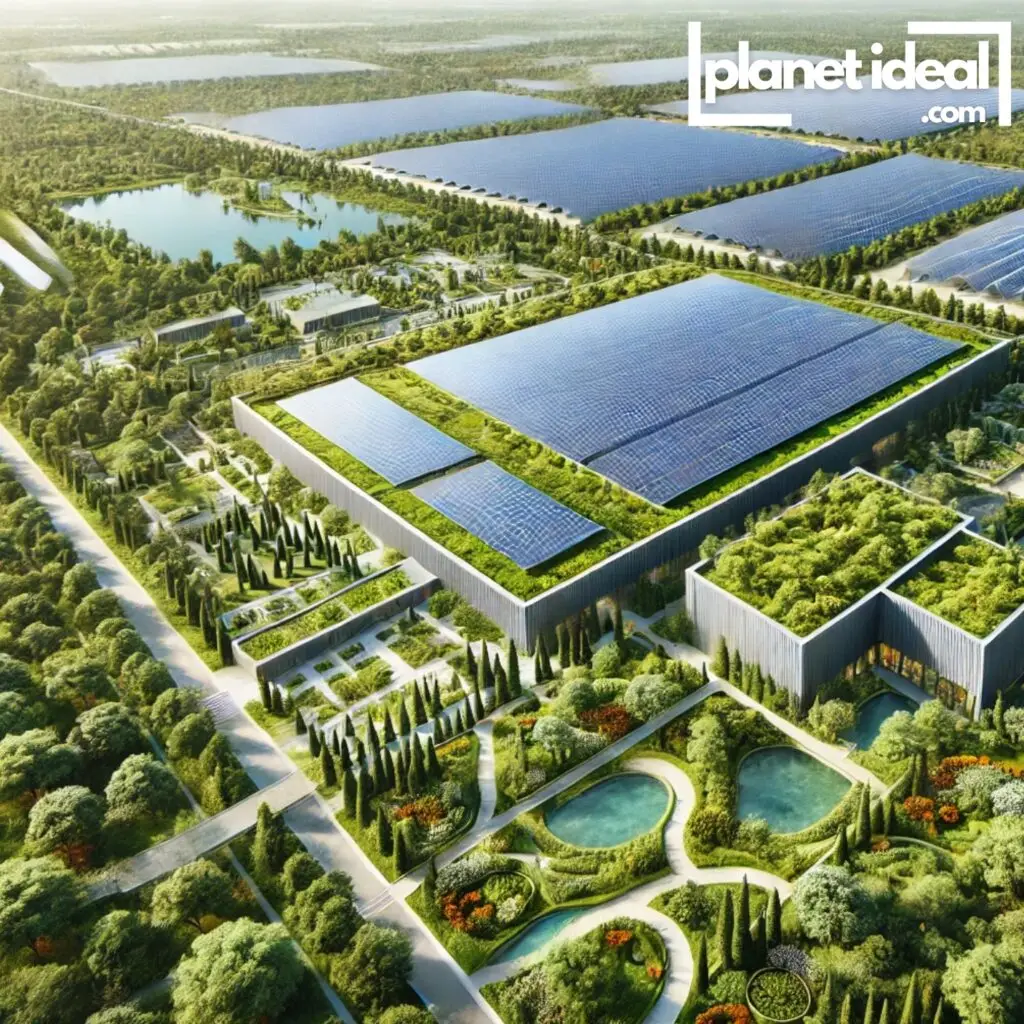
3. Eco-Friendly Gadgets and Devices
The push for sustainability has also extended to the devices we use every day, from smartphones to smart home systems.
Features of Eco-Friendly Gadgets:
- Recyclable Materials: Devices made from recycled or biodegradable components.
- Energy Efficiency: Smart gadgets that use less power, such as energy-saving smart plugs or LED lights.
- Longevity: Modular devices that allow users to replace or upgrade parts instead of discarding the entire product.
Examples of Sustainable Gadgets:
| Device | Sustainability Feature |
|---|---|
| Fairphone | Modular design, made with conflict-free materials. |
| Nest Thermostat | Optimizes energy usage to reduce electricity bills. |
| Solar-Powered Chargers | Charge devices without relying on grid electricity. |
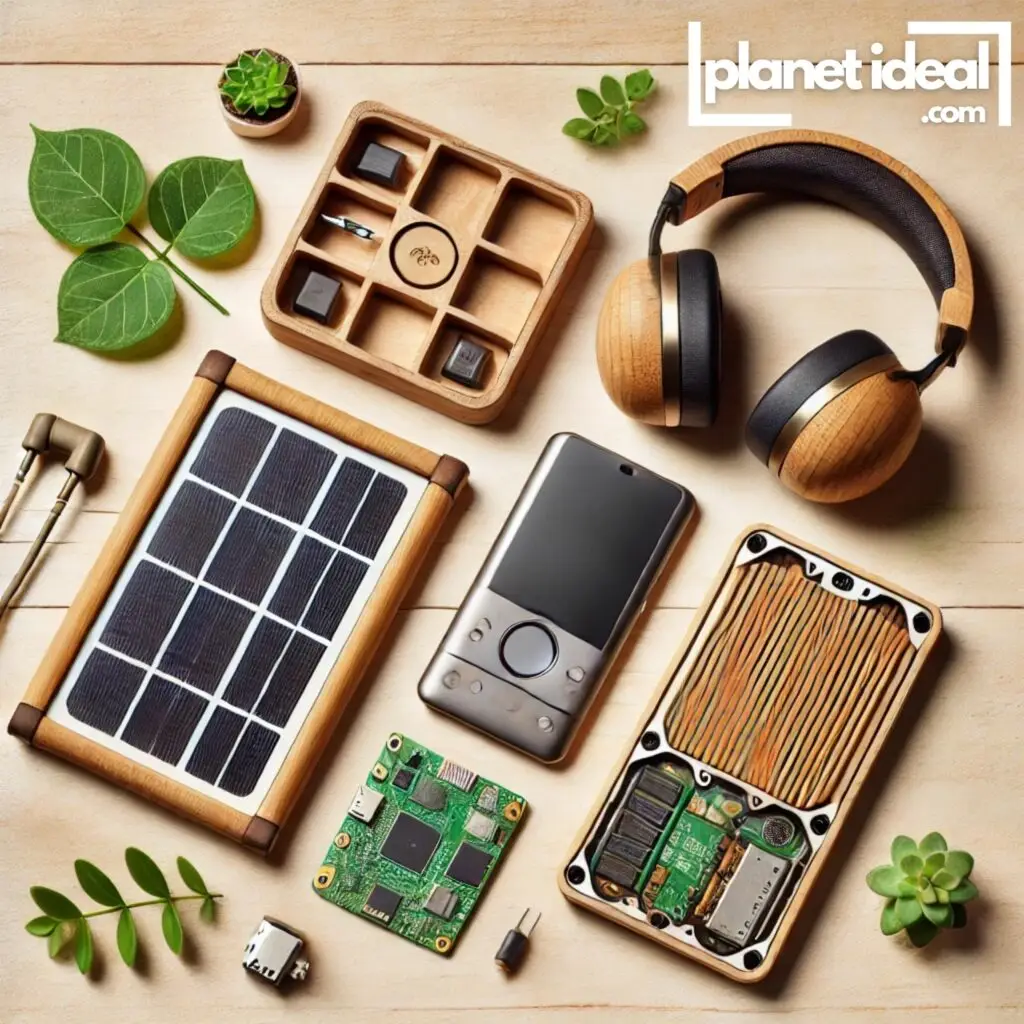
4. The Role of Artificial Intelligence in Sustainability
Artificial intelligence (AI) isn’t just about self-driving cars and chatbots—it’s also playing a major role in tackling environmental challenges.
How AI Supports Sustainability:
- Energy Management: AI algorithms optimize energy use in buildings, factories, and cities.
- Climate Modeling: AI-powered simulations help predict and mitigate the effects of climate change.
- Waste Reduction: Smart waste management systems use AI to sort and recycle materials more efficiently.
Example: Microsoft’s AI for Earth initiative provides tools and resources for organizations working on environmental projects.

5. Sustainable Materials in Tech Manufacturing
The materials used to create tech products can have a significant impact on the environment. Thankfully, innovators are finding ways to make manufacturing more sustainable.
Innovations in Sustainable Materials:
- Bioplastics: Derived from renewable sources like corn or sugarcane, these plastics are biodegradable.
- Recycled Metals: Companies like Apple are using recycled aluminum and rare earth elements in their products.
- Graphene: A super-strong, lightweight material that could revolutionize battery and hardware design.
6. Smart Cities and IoT (Internet of Things)
Smart cities use interconnected technologies to improve efficiency, reduce waste, and enhance quality of life. These innovations are central to creating urban areas that are both tech-savvy and sustainable.
Features of Smart Cities:
- Smart Grids: Manage energy distribution to reduce waste and outages.
- Sustainable Transport: Electric buses, bike-sharing programs, and pedestrian-friendly infrastructure.
- Green Buildings: Incorporate energy-efficient designs, solar panels, and green roofs.
Example: Copenhagen aims to become the world’s first carbon-neutral city by 2025, thanks to its investment in smart technologies and renewable energy.
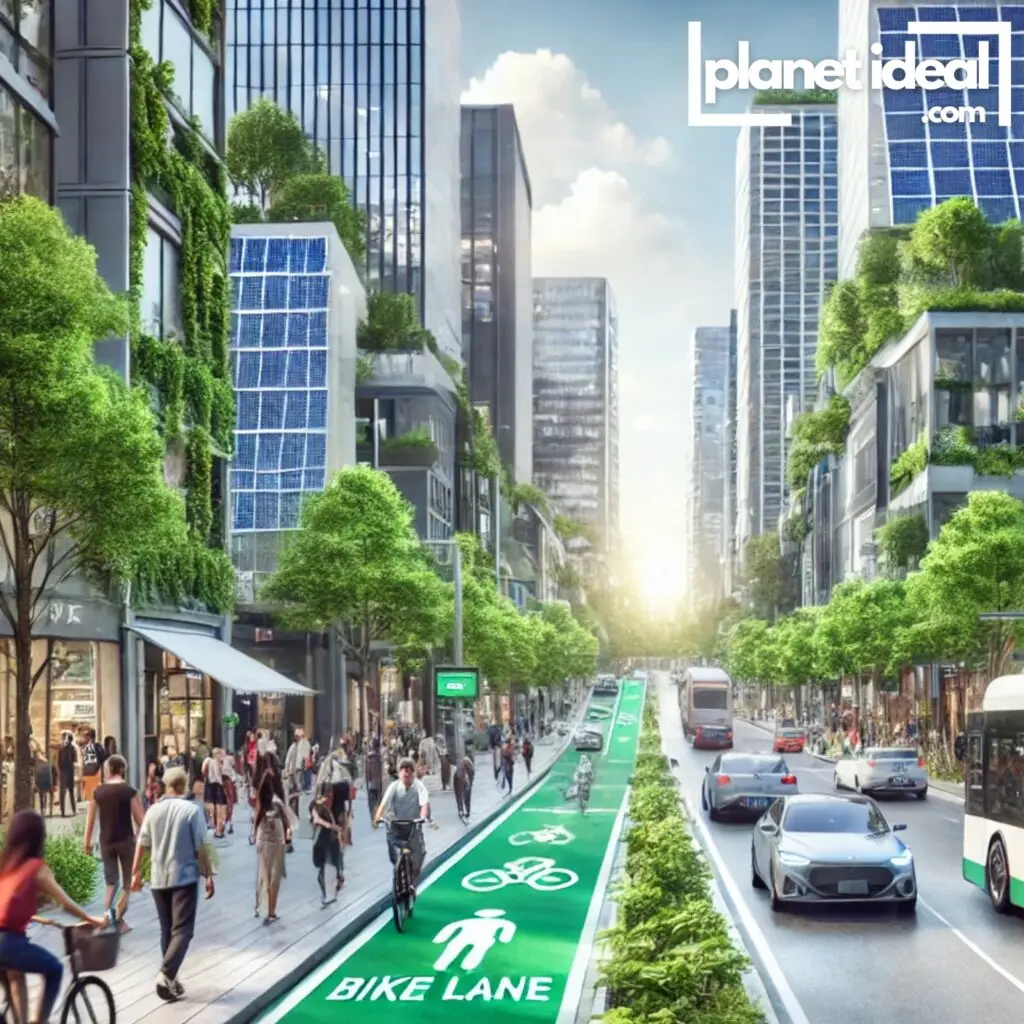
Benefits of Sustainable Tech for the Planet
| Benefit | How It Helps the Planet |
|---|---|
| Reduced Carbon Emissions | Renewable energy and energy-efficient systems cut greenhouse gases. |
| Less Waste | Sustainable manufacturing and recycling reduce e-waste. |
| Resource Conservation | Innovative materials and efficient systems minimize resource use. |
| Enhanced Ecosystems | AI-driven solutions help protect biodiversity and manage conservation efforts. |
At Planet Ideal, we’re on a mission to make sustainable living accessible for everyone. Our team of eco-enthusiasts writes short, snappy, and easy-to-digest articles designed to inspire real change without overwhelming. From practical tips to innovative ideas, we’re here to prove that living green can be stylish, convenient, and enjoyable. Join us as we empower individuals, families, and communities to embrace eco-friendly lifestyles—one step, one story, and one solution at a time.

